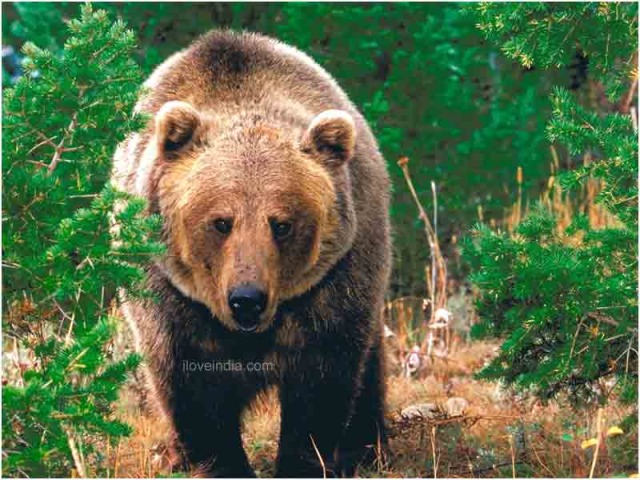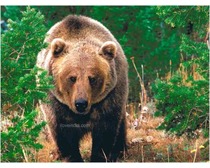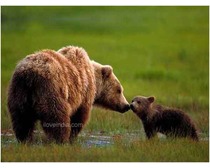Grizzly bears are a subspecies of brown bear, mostly found in western part of North America. Read on to know some interesting facts & amazing information on this threatened animal species.
Facts About Grizzly Bear
Also known as Silvertip bear, Grizzly bear is a subspecies of the brown bear and is found mostly in the uplands of western North America. In the coastal areas, these bears can be spotted alongside streams, lakes, rivers, and ponds. They have a reputation of being solitary animals, which spend much of their time foraging (searching food). Today, the species is considered to be threatened, with its historic range, which covered much of North America, reduced significantly. Grizzly bears are now restricted to only 2 percent of their original habitat range in the lower 48 states of North America. They can also be sighted in certain areas of Alaska and Western Canada. Let us explore some more interesting facts & amazing information on Grizzly bears.

Facts About Grizzly Bear
Kingdom: Animalia
Phylum: Chordata
Class: Mammalia
Order: Carnivora
Family: Ursidae
Species: U. arctos
Sub Species: U. a. horribilis
Height: 6 Feet 8 inches
Weight: 300-600 Pounds (males), 200-400 Pounds (females)
Life Span: 25 years
Diet: Fish
Habitat: Mountains and Grasslands
Age of Sexual Maturity: 4-5 Years
Gestation Period: 220 Days
Interesting And Amazing Information On Grizzly Bear
- Grizzly bears are one of the largest of the North American land mammals. They have a concave or dish-shaped face and a distinctive hump on the shoulder, which is actually a mass of muscles. This shoulder hump enables them to dig and use their paws as a striking force, when they catch their preys.
- The bears have a height of around 7 feet and weigh anywhere between 300 and 600 pounds. Occasionally, their weight can go up to 800 pounds. They are larger than the black bear. Female grizzlies are smaller in size, weighing between 200-400 pounds.
- Grizzly bears are known to avoid humans and therefore, it will be wise to make continued noise while venturing in their habitat. It is said that, if one is on the verge of being attacked by the grizzly bear, he/she should play dead than trying to run from the animal.
- These bears march to higher altitudes in winters, which is their hibernations period. In spring, they come down to lower elevations.
- Grizzly bears require large spaces to live. The range of their habitat includes diverse forests, interspersed with moist meadows and grasslands.
- These bears should eat enough to store great amount of fat in their body, which can sustain them during their long winter sleep. In fact, medical scientists are greatly curious of the ability of grizzly bears to eat large quantities of food and store fat in their body without suffering from heart diseases or cholesterol problems.
- Grizzly bears enter their den in October or November. They get no nourishment or water for the next four to five months. This is the period when these bears use the accumulated fat in their body. Male grizzlies come out of their den in March or April, while the females come out in mid-April or May.
- Adult Grizzly bears are safe from other wild animals, being at the top of the food chain. However, their cubs may be hunted down by mountain lions, wolves and other bears, when they are not around their mothers.
- A female Grizzly bear reproduces once in a span of three to five years. These bears mate between early May and mid-July and their cubs are born between the end of January and early March. The number of cubs depends greatly on the weight of the female grizzly.


See also
More from iloveindia.com
- Home Remedies | Ayurveda | Vastu | Yoga | Feng Shui | Tattoos | Fitness | Garden | Nutrition | Parenting | Bikes | Cars | Baby Care | Indian Weddings | Festivals | Party ideas | Horoscope 2015 | Pets | Finance | Figures of Speech | Hotels in India : Delhi | Hyderabad | Chennai | Mumbai | Kolkata | Bangalore | Ahmedabad | Jaipur
- Contact Us Careers Disclaimer Privacy Policy Advertise With Us Lifestyle Sitemap Copyright iloveindia.com. All Rights Reserved.




